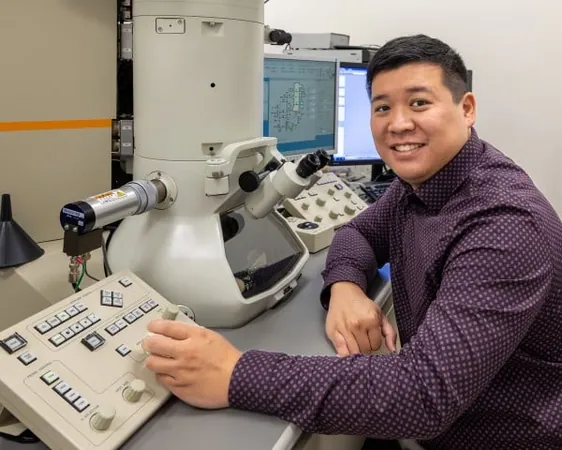
Unlocking the Future of Fusion Energy with Revolutionary UHTCs
2025-06-02
Author: Li
The Next Frontier in Energy: Ultra-High-Temperature Ceramics
As the world races toward a sustainable energy future, the development of cutting-edge materials for next-generation fusion reactors has taken center stage. Oak Ridge National Laboratory (ORNL), in collaboration with the University of Tennessee, Knoxville, and Stony Brook University, has spotlighted ultra-high-temperature ceramics (UHTCs) as a game-changing candidate in a recent study published in Current Opinion in Solid State & Materials Science.
Why UHTCs Are Game Changers
UHTCs are distinguished by their remarkable melting points exceeding 3,000 degrees Celsius, making them exceptional materials for withstanding the extreme conditions inside fusion reactors. They excel not only in thermal conductivity but also in mechanical properties like fracture toughness, surpassing that of conventional materials like tungsten.
The Crucial Role of Plasma-Facing Components
At the core of fusion technology lie plasma-facing components—structures that encounter immense heat and radiation within the reactor. Current materials struggle under these conditions, but UHTCs offer promise. Their unique thermomechanical properties and adaptability may provide the very durability needed for the commercial viability of fusion energy.
Meet the Expert: Yan-Ru Lin
Leading this wave of innovation is Yan-Ru Lin, a materials scientist at ORNL. With a doctorate in materials science and an impressive background in nuclear engineering, Lin is at the forefront of studying radiation effects on materials, employing cutting-edge techniques such as transmission electron microscopy.
Challenges and Opportunities Ahead
Despite their advantages, UHTCs face significant challenges. The lack of comprehensive data on their behavior under neutron irradiation and plasma interactions poses hurdles for their deployment in real-world fusion reactors. Delving into these material behaviors is vital to ensuring their reliability in harsh fusion environments.
Exciting Directions for Future Research
Ongoing research is uncovering fascinating paths for UHTCs, including the development of multicomponent systems. These advanced materials can offer superior oxidation resistance, toughness, and heat conduction through carefully engineered compositions, potentially overcoming current limitations.
The Future Is Bright for Fusion Energy
The insights from ORNL's research, combined with support from the Department of Energy's Office of Fusion Energy Sciences, could pave the way for a new era in fusion technology. With revolutionized materials like UHTCs, the dream of affordable, clean, and sustainable fusion energy may soon become reality.


 Brasil (PT)
Brasil (PT)
 Canada (EN)
Canada (EN)
 Chile (ES)
Chile (ES)
 Česko (CS)
Česko (CS)
 대한민국 (KO)
대한민국 (KO)
 España (ES)
España (ES)
 France (FR)
France (FR)
 Hong Kong (EN)
Hong Kong (EN)
 Italia (IT)
Italia (IT)
 日本 (JA)
日本 (JA)
 Magyarország (HU)
Magyarország (HU)
 Norge (NO)
Norge (NO)
 Polska (PL)
Polska (PL)
 Schweiz (DE)
Schweiz (DE)
 Singapore (EN)
Singapore (EN)
 Sverige (SV)
Sverige (SV)
 Suomi (FI)
Suomi (FI)
 Türkiye (TR)
Türkiye (TR)
 الإمارات العربية المتحدة (AR)
الإمارات العربية المتحدة (AR)